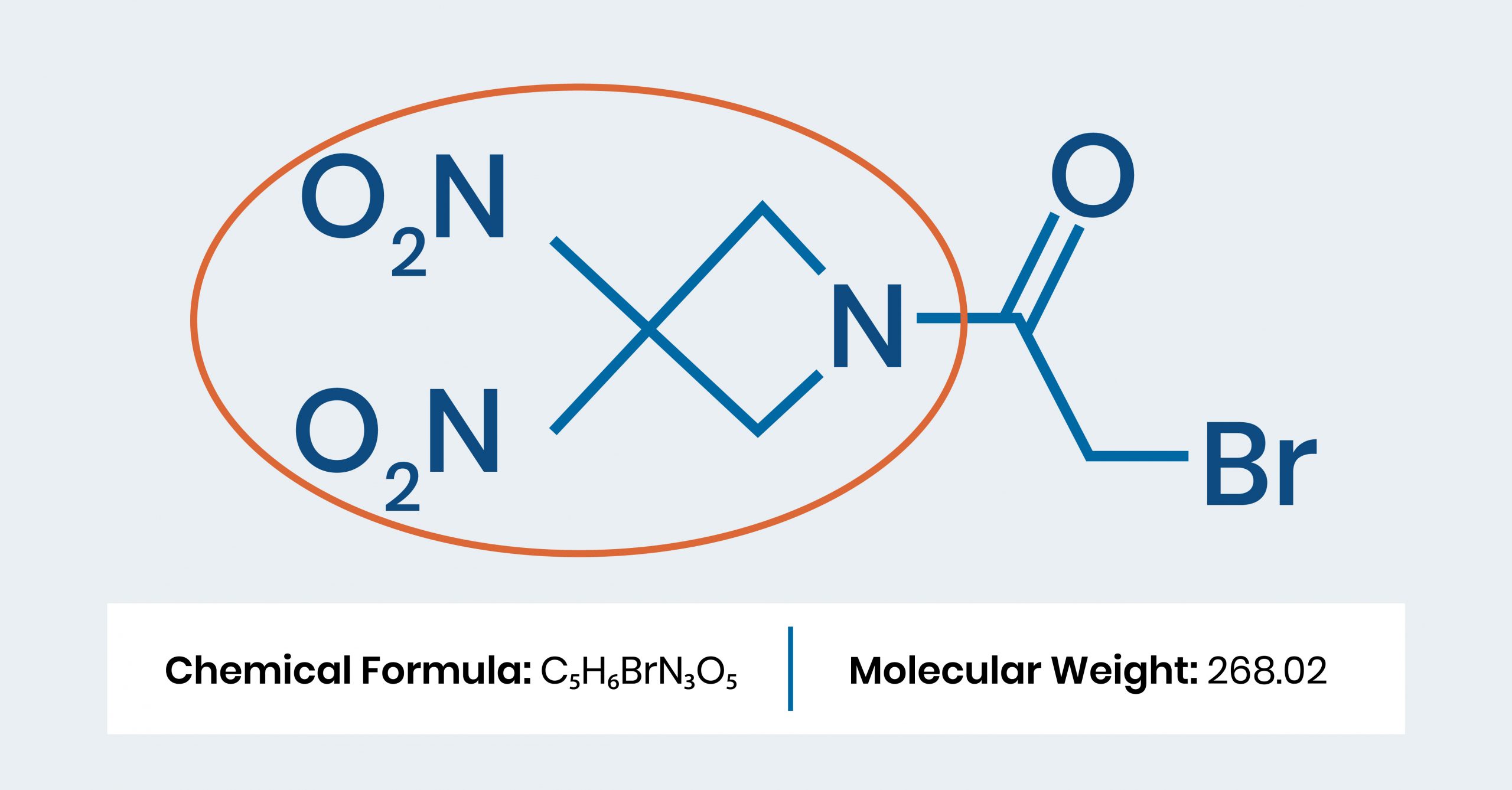Welcome back and cheers to the New Year! #2024
We plan to ring it in right with the four membered dinitroazetidine ring of RRx-001 (nibrozetone), shown and circled below.

The bling-bling ✨on this specific ring comes from the twin nitro groups (NO2) that are attached to it. These nitro groups metabolize to the free radical vasodilator, nitric oxide (NO), under reductive and poorly oxygenated or hypoxic conditions when the dinitroazetidine ring comes apart. Low nitric oxide levels are characteristic of several diseases, among them hypertension, diabetes, pulmonary hypertension, renal failure, myocardial infarction, stroke and cancer. The release of nitric oxide from RRx-001 (nibrozetone) under reductive and poorly oxygenated conditions is one of the reasons for its broad-based activity.
The polarity or electrical charge distribution of these nitro groups probably also explains why RRx-001 (nibrozetone) so readily penetrates the cell membranes of red blood cells where it binds to hemoglobin, and to macrophages where it binds to and inhibits the NLRP3 inflammasome, an ensemble of proteins that kickstart and perpetuate the inflammatory response. Inhibition of the NLRP3 inflammasome is central to the protective properties of RRx-001 (nibrozetone), which will start a Phase 2b randomized clinical trial called KEVLARx this year in head and neck cancer to prevent or mitigate against the development of severe oral mucositis, a common complication of treatment with chemotherapy and radiation and an indication where the small molecule has already received coveted FDA Fast Track designation.
And besides KEVLARx, RRx-001 (nibrozetone) will continue with its Phase 3 clinical trial called REPLATINUM in small cell lung cancer (SCLC). It will also start a Phase 1 clinical trial in endometriosis, which is to be funded by a recently awarded National Health Service (NHS) grant.
So, for RRx-001 (nibrozetone) clearly much is in store this 2024.
And doesn’t that last sentence just have a really nice ring to it?
